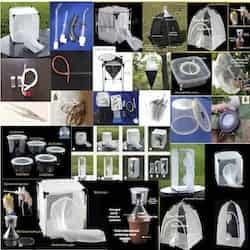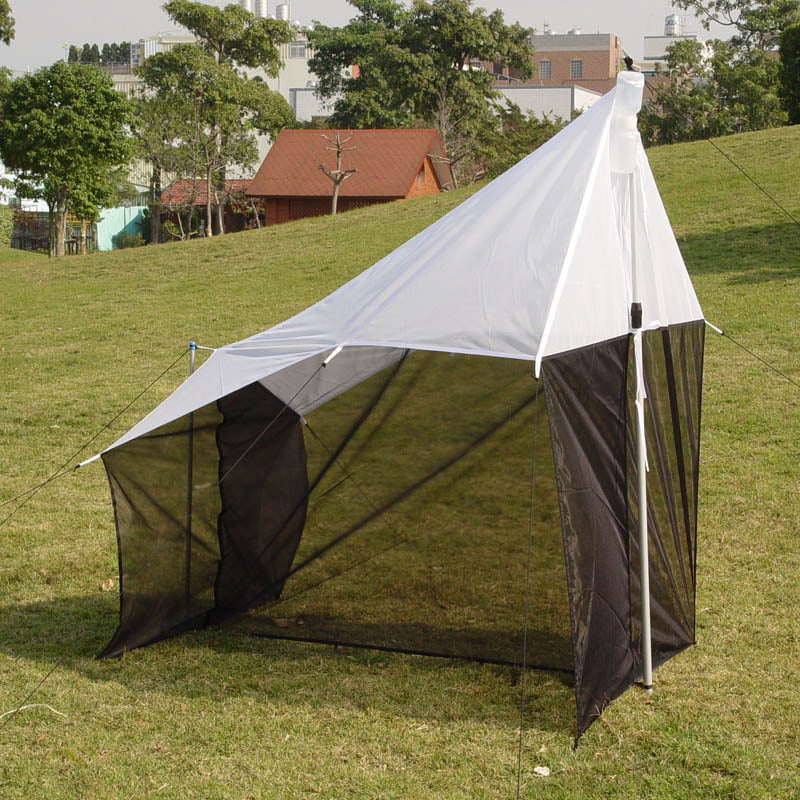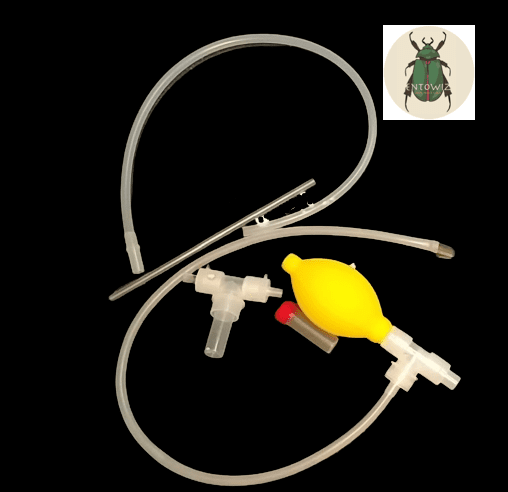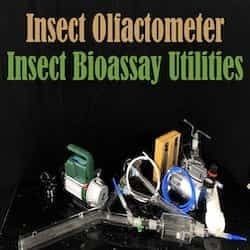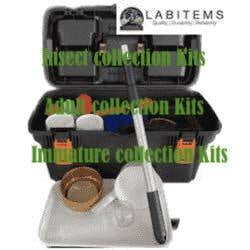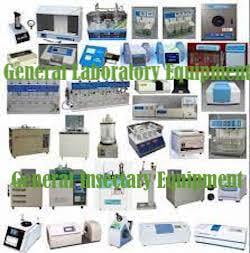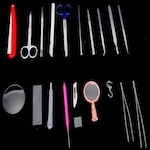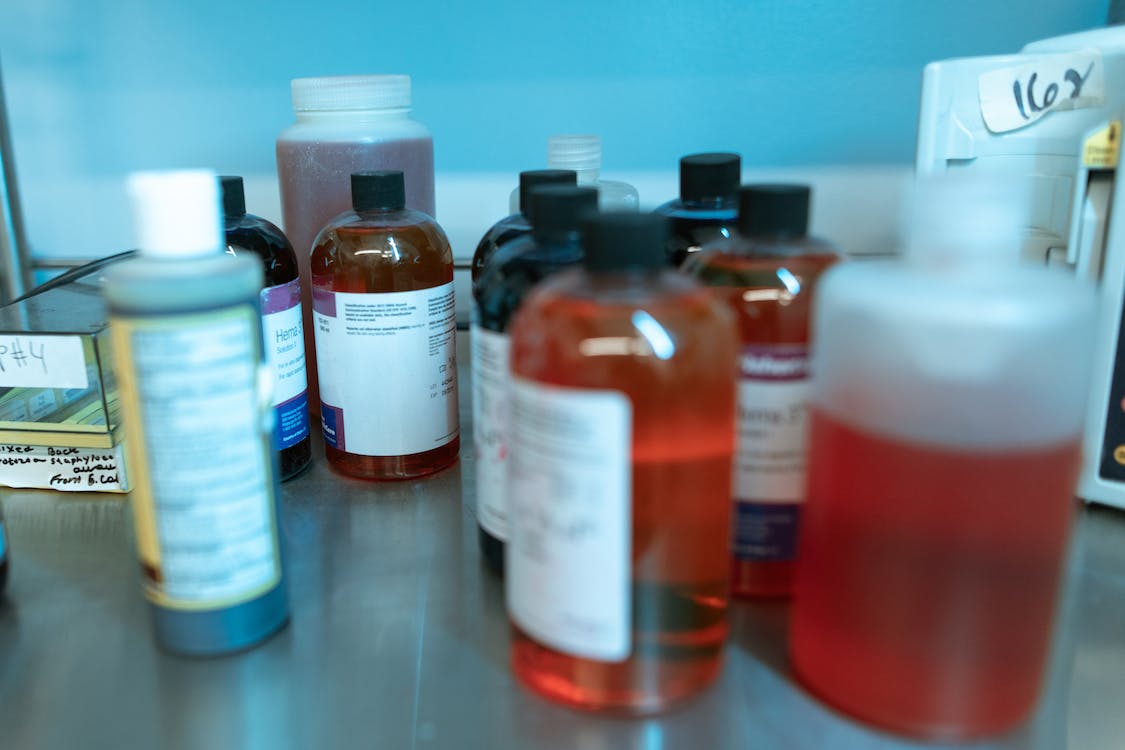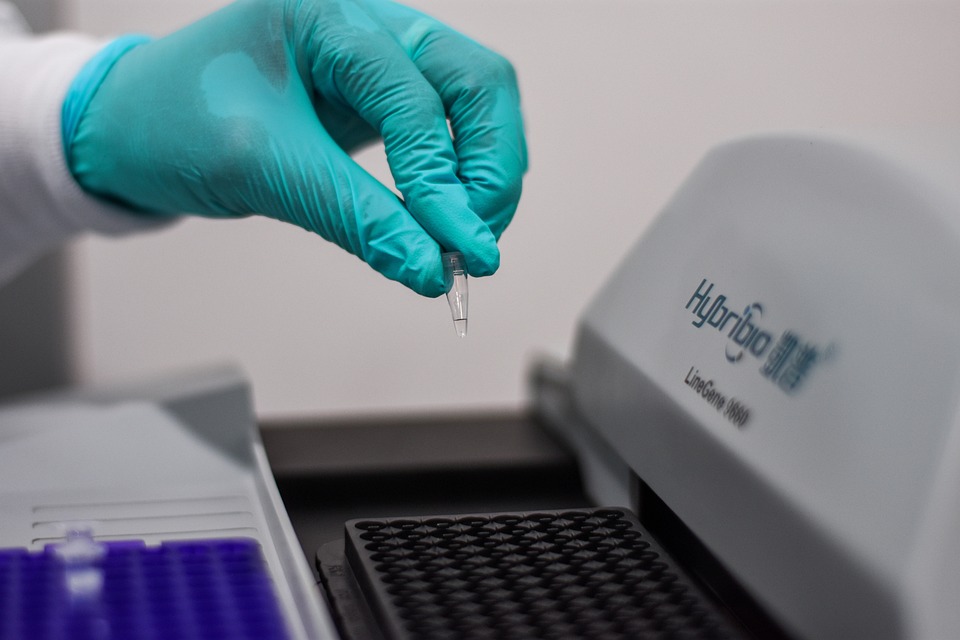Protocol for High-Quality Genomic DNA Isolation from Mosquitoes
Protocol for High-Quality Genomic DNA Isolation from Mosquitoes
This protocol outlines the isolation of high-quality genomic DNA from mosquitoes using a modified CTAB (Cetyl Trimethyl Ammonium Bromide) method.
Stock Solutions:
- Phosphate-Buffered Saline (PBS, pH 7.4)
- Proteinase K Solution (1 mg/mL)
- TE Buffer (10 mM Tris-HCl, pH 8.0, 1 mM EDTA)
- RNAse A Solution (10 mg/mL) (Optional)
- CTAB Lysis Buffer (1% CTAB, 0.5 M NaCl, 0.1 M Tris-HCl pH 8.0)
Working Solutions:
- Lysis Solution (CTAB Lysis Buffer with Proteinase K)
Other Materials:
- Sterile mortar and pestle or bead beating tubes with beads
- Microcentrifuge tubes (1.5 mL)
- Micropipettes
- Pipette tips
- Microcentrifuge
- Chloroform:Isoamyl Alcohol (24:1 v/v) (flammable, handle in fume hood)
- 70% Ethanol (prepared with RNase-free water)
- RNase-free water
- Heating block (optional, for proteinase K digestion)
- DNA quantification instrument (e.g., Nanodrop)
- Agarose gel electrophoresis equipment (optional, for DNA quality check)
Safety Precautions:
- Wear gloves, lab coat, and safety glasses while handling all materials.
- CTAB is an irritant. Avoid contact with skin and eyes.
- Chloroform is a volatile, toxic solvent. Handle in a fume hood and dispose of according to institutional guidelines.
- Ethanol is flammable. Keep away from open flames.
Protocol:
Mosquito Preparation:
- Freeze mosquitoes at -20°C or store in 70% ethanol at -20°C until use.
- If using frozen mosquitoes, allow them to thaw completely on ice before proceeding.
Homogenization:
- Transfer a single mosquito (or a pool of few mosquitoes) to a sterile mortar and pestle.
- Alternatively, add the mosquito(es) to a bead beating tube with sterile beads.
- Add 200 μL of freshly prepared Lysis Solution (CTAB with Proteinase K).
- Grind the mosquito thoroughly using the mortar and pestle or homogenize the sample in a bead beater following the manufacturer's instructions.
- Ensure complete homogenization to lyse the mosquito cells and release the genomic DNA.
Proteinase K Digestion:
- Incubate the homogenate at 55°C for 1-2 hours. Alternatively, incubate at 65°C for 30 minutes if using a heating block for faster digestion.
- Proteinase K digestion helps degrade proteins that can interfere with DNA isolation.
RNAse A Treatment (Optional):
- Add 10 μL of RNAse A solution (10 mg/mL) to the lysate.
- Incubate the mixture at 37°C for 30 minutes. RNAse A helps degrade any residual RNA present in the sample. This step can be omitted if RNA contamination is not a concern for your downstream application.
DNA Extraction:
- Add an equal volume (200 μL) of Chloroform:Isoamyl Alcohol (24:1 v/v) to the lysate.
- Chloroform helps separate the organic and aqueous phases, where DNA partitions to the aqueous phase.
- Mix the solution thoroughly by vortexing for 30 seconds.
Centrifugation:
- Centrifuge the mixture at high speed (12,000 x g) for 10 minutes at room temperature.
- Centrifugation separates the mixture into three phases: an upper aqueous phase containing the DNA, a white interphase, and a lower organic phase.
Transfer of Aqueous Phase:
- Carefully transfer the upper aqueous phase (approximately 200 μL) to a clean 1.5 mL microcentrifuge tube without disturbing the interphase or the organic phase. The DNA is present in this aqueous phase.
DNA Precipitation:
- Add an equal volume (200 μL) of ice-cold 70% ethanol to the transferred aqueous phase.
- Ethanol precipitates the DNA from the solution.
- Mix the solution gently by inverting the tube several times. Avoid vortexing
Centrifugation:
- Centrifuge the mixture at high speed (12,000 x g) for 5 minutes at 4°C.
- The centrifugation pellet contains the precipitated DNA.
Washing:
- Carefully discard the supernatant without disturbing the pellet.
- Add 500 μL of cold 70% ethanol to the pellet and wash by gently inverting the tube several times.
- This step removes residual salts and contaminants.
Second Centrifugation:
- Centrifuge the mixture at high speed (12,000 x g) for 2 minutes at 4°C.
- Discard the supernatant completely. The DNA pellet will be visible at the bottom of the tube.
Drying the DNA Pellet:
- Keep the tube open and allow the ethanol to evaporate completely, typically for 10-15 minutes at room temperature or in a fume hood with the fume hood switched off.
- Overdrying can make the DNA pellet difficult to resuspend.
DNA Resuspension:
- Resuspend the DNA pellet in an appropriate volume (e.g., 50 μL) of TE buffer (pH 8.0).
- TE buffer helps dissolve the DNA and provides a neutral environment for storage.
- Gently flick the tube or pipette up and down to aid in dissolving the pellet. Avoid vortexing, which can shear the DNA.
DNA Quantification (Optional):
- Quantify the isolated DNA using a Nanodrop or other suitable method. This step helps determine the yield and purity of the extracted DNA.
DNA Quality Check (Optional):
- Analyze a small aliquot of the DNA by agarose gel electrophoresis to assess its integrity. Look for a single, sharp band corresponding to high-molecular-weight genomic DNA.
Storage:
- Store the purified genomic DNA at 4°C for short-term storage or -20°C for long-term storage.
Tips:
- Work quickly and efficiently throughout the protocol to minimize DNA degradation.
- Use fresh, high-quality reagents for optimal results.
- The amount of starting material (mosquitoes) can be adjusted based on your needs.
- This protocol can be easily scaled up or down depending on the number of samples being processed.


